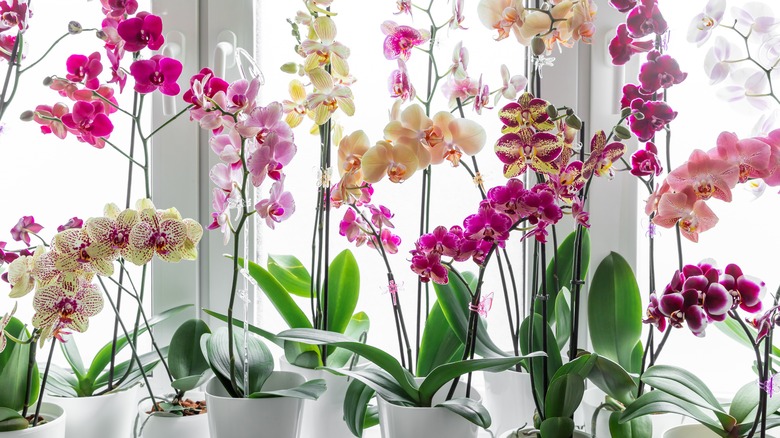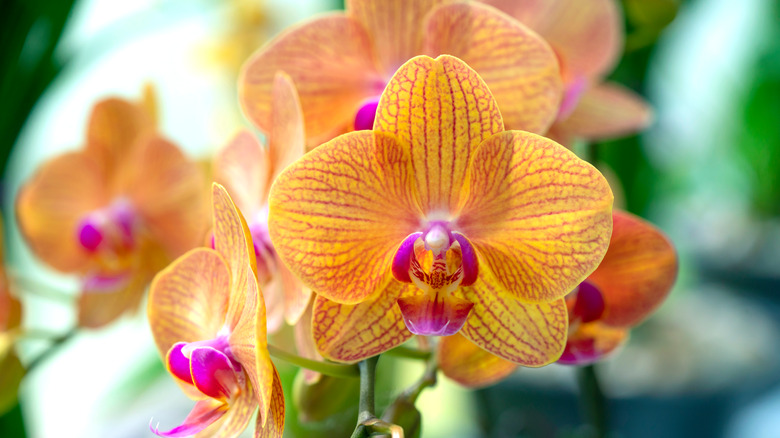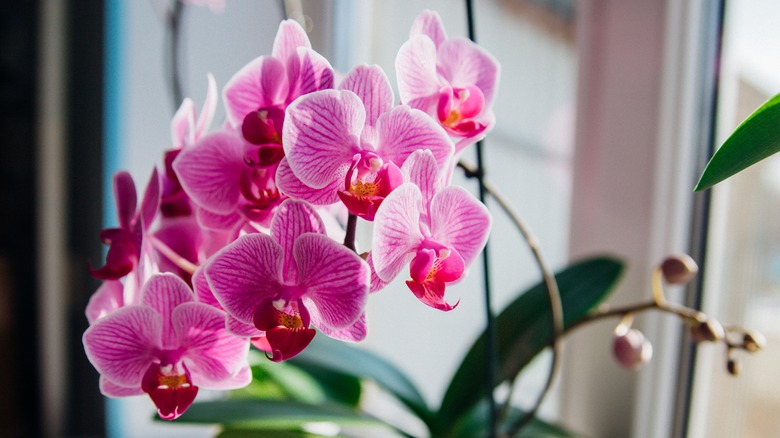What Is The Best Time Of Year To Plant Orchids?
Orchids have a reputation for being beautiful yet finicky flowers. Many people have tried to keep these bright blooms alive. While they may need more care than other flowers, orchids can thrive if you know the secrets to their care. Around the world, there are more than 25,000 species of orchids, according to Orchids Info, with Phalaenopsis, or the moth orchid, being one of the most well-known.
Each type of orchid is unique, especially since there is a variety native to every continent besides Antarctica, says North Dakota State University, though there are some similarities across the species. Many of the species don't need traditional soil but instead thrive in bark, pebbles, peat moss, perlite, or a combination of these mediums. Knowing the variety of orchid you're trying to grow can help you succeed. But, like most flowers, you can't plant seeds or full-grown plants at any time of the year. Timing the planting correctly is one of the keys to ensuring bright, beautiful blooms.
Temperature matters
The different varieties of orchids can be separated into three categories: cool-, intermediate-, and warm-growing, according to Orchid Bliss. These categories refer to the temperatures of the best growing conditions, denoting the lowest winter night temperatures and the highest summer daytime temperatures the flower can handle. Temperatures should drop between 10 and 15 degrees Fahrenheit from day to night to promote flowering.
Because orchids go dormant in the fall and winter, it's better to plant the flowers when they're actively growing. Spring is the best time of year to pot or repot orchids because that is the beginning of the next growing cycle, says Almanac. However, that doesn't mean you should neglect the plant through the winter and fall. You'll want to ensure that the flowers are receiving enough light by placing them close to a window or supplementing them with a grow light. This will ensure that the flowers will return once the weather gets warmer and the days get longer. Orchids often need to be repotted once a year to promote new root growth, therefore creating a healthier plant.
Outside orchids
Many orchids are known to be houseplants because of their delicate growing needs. But they can be grown outside with the right conditions. Areas with a warmer climate that are frost-free year-round are the best place to grow orchids outside, either in the ground or in a pot, says the American Orchid Society. However, in these areas, you have to be cautious about the orchid receiving excess light as the plant is native to dappled light environments. Mid-day shade is often required in hot, dry environments. But humidity around 40% is preferred. If you're growing orchids in a desert-like environment, it's best to group them together along with other plants to create a microclimate that can help with low humidity.
In areas where it gets cold enough to have frost at night, you'll want to avoid planting orchids in the ground. Even cool growers can only handle a minimum temperature of 50 degrees at night, says Orchid Bliss. Lower than that risks killing off the plant and it not blooming again in the spring. In these colder climates, you can still grow orchids outside, but you should use a pot instead of in the ground or planter. Then, once the weather gets cooler, you'll be able to bring the pot inside so the plant can go dormant but not die.


